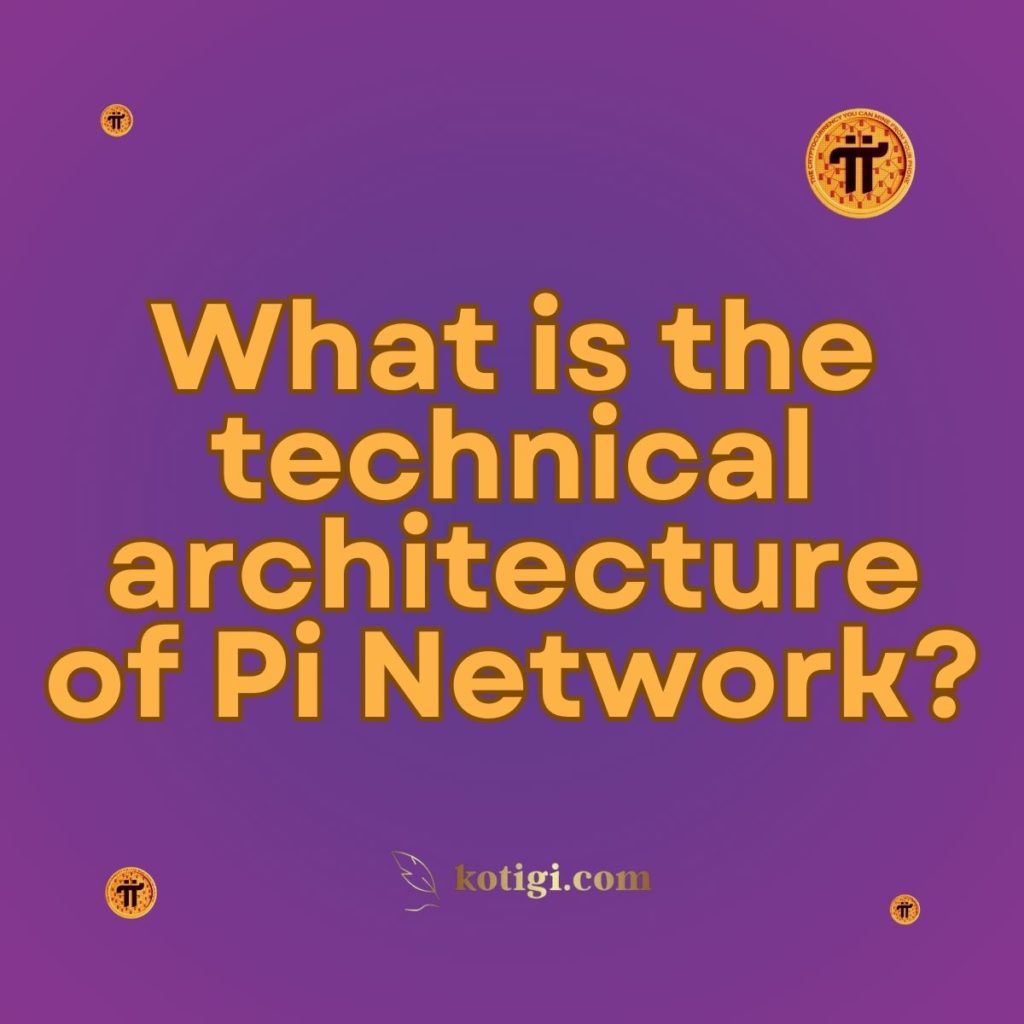
Here’s a table summarizing the technical architecture of Pi Network:
| Component | Description |
|---|---|
| Consensus Algorithm | Stellar Consensus Protocol (SCP), based on Federated Byzantine Agreement (FBA) |
| Node Architecture | – Mobile Nodes: Lightweight nodes running on mobile apps – Full Nodes: Nodes maintaining a full blockchain copy |
| Blockchain Layer | – Transaction Ledger: Immutable record of all transactions – Smart Contracts (Planned): Future support for decentralized applications (dApps) |
| Mobile Application Layer | – User-Friendly Interface: Intuitive design for easy interaction – Security Features: Includes encryption and two-factor authentication |
| Security and Privacy | – Encryption: Secures communications – Authentication: KYC and other security measures to prevent fraud |
| Scalability | – Efficient Consensus Mechanism: SCP allows handling a large number of transactions efficiently – Layered Architecture: Separates different functions for better scalability |
| Ecosystem and dApps (Planned) | – Development Platform: Support for creating dApps and smart contracts – Ecosystem Growth: Aim to create a robust ecosystem for various services |
This table provides a concise overview of Pi Network’s technical architecture, highlighting its key components and their functions.
What is the technical architecture of Pi Network?
Pi Network is designed to be a scalable, user-friendly, and energy-efficient cryptocurrency platform. The technical architecture of Pi Network is built around a few core components, each playing a vital role in achieving these goals. Here’s a breakdown of the key elements:
1. Consensus Algorithm: Stellar Consensus Protocol (SCP)
At the heart of Pi Network’s technical architecture is the Stellar Consensus Protocol (SCP), which is based on the Federated Byzantine Agreement (FBA). This protocol allows Pi to achieve consensus without the need for energy-intensive mining.
- Federated Byzantine Agreement (FBA):
FBA enables the network to reach agreement (consensus) on the state of the ledger through a network of trusted nodes, rather than relying on a centralized authority or a fully decentralized proof-of-work system. - Energy Efficiency:
The SCP’s efficiency allows Pi Network to operate on mobile devices without draining significant battery life or requiring expensive hardware.
2. Node Architecture
Pi Network’s node architecture is designed to support decentralization while ensuring the network remains secure and efficient.
- Mobile Nodes:
Users participate in the network by running a mobile app, which acts as a light node, verifying transactions in a lightweight manner. These nodes do not perform heavy computation but contribute to the network’s consensus. - Full Nodes:
More technically inclined users can run full nodes, which maintain a copy of the entire blockchain and participate in the consensus process more actively. These nodes help secure the network and ensure the integrity of the ledger.
3. Blockchain Layer
Pi Network uses a blockchain as its foundational layer, where all transactions and data are recorded immutably.
- Transaction Ledger:
The blockchain records all transactions in a transparent, immutable ledger that can be accessed by any participant in the network. - Smart Contract Support (Future):
While not yet implemented, Pi Network plans to support smart contracts, allowing developers to build decentralized applications (dApps) on the platform.
4. Mobile Application Layer
The mobile app is the primary interface for users to interact with Pi Network.
- User-Friendly Interface:
The app is designed to be intuitive and easy to use, making it accessible to non-technical users. It allows users to mine Pi, manage their accounts, and interact with the Pi community. - Security Features:
The mobile app includes built-in security features, such as two-factor authentication and encryption, to protect users’ accounts and Pi balances.
5. Security and Privacy
Pi Network employs multiple layers of security to protect the network and its users.
- Encryption:
All communications between users and the network are encrypted to prevent eavesdropping and unauthorized access. - Authentication:
Users must authenticate themselves via the mobile app, and additional security measures like KYC (Know Your Customer) are being implemented to prevent fraud and ensure the integrity of the network.
6. Scalability
Pi Network’s architecture is designed to scale as the user base grows.
- Efficient Consensus Mechanism:
SCP is chosen for its ability to scale efficiently, handling a large number of transactions without requiring the massive computational resources typically associated with proof-of-work blockchains. - Layered Architecture:
The architecture is layered to separate the mobile interface, node operation, and consensus processes, allowing each to scale independently as needed.
7. Ecosystem and dApps (Planned)
Pi Network aims to build a robust ecosystem where developers can create dApps that utilize the Pi cryptocurrency.
- Development Platform:
Once smart contracts are supported, developers will be able to create decentralized applications that leverage Pi as a medium of exchange or utility token. - Ecosystem Growth:
The long-term vision includes a thriving ecosystem where Pi can be used for various services, including financial transactions, digital goods, and more.
Conclusion
Pi Network’s technical architecture is a blend of existing blockchain technologies and innovative approaches designed to make cryptocurrency accessible to a broader audience. By leveraging the Stellar Consensus Protocol, focusing on mobile accessibility, and planning for future expansion with smart contracts and a decentralized ecosystem, Pi Network is positioning itself as a user-friendly and scalable alternative in the cryptocurrency space.

